Inside: Come take a tour of our kindergarten classroom to see 7 of our favorite play-based centers, where we play and learn during choice time.
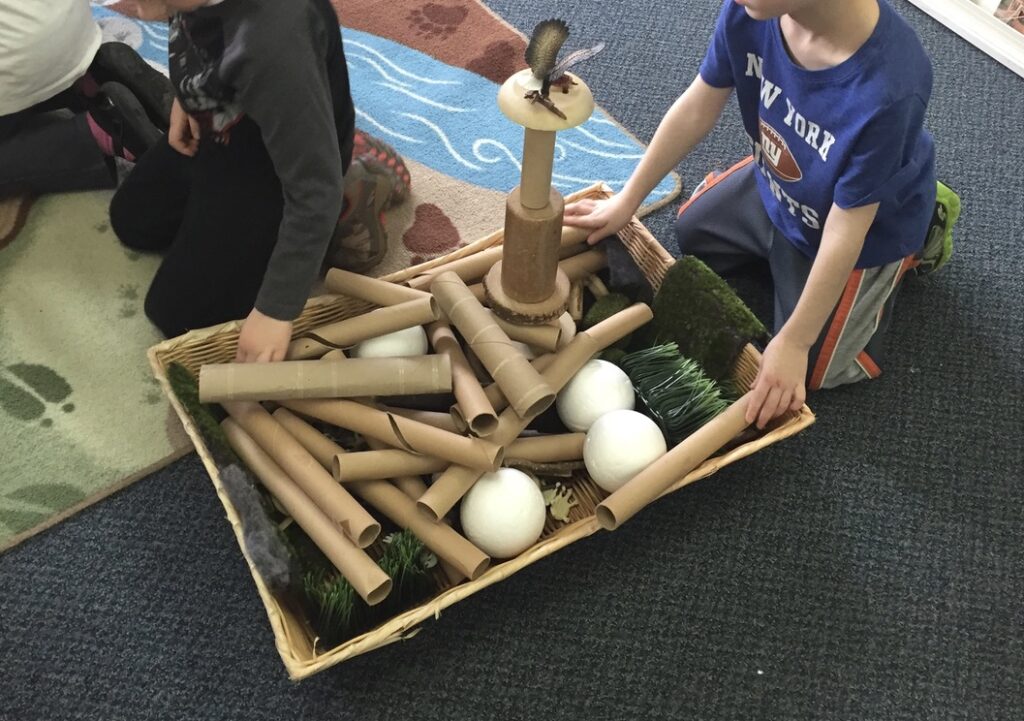
Making Room for Play-Based Centers
Play gets a bad rap. I know this because I hesitate to use the word in certain circles.
To some, if children are “playing” they are not learning, which couldn’t be further from the truth. If this were true, they wouldn’t have learned anything prior to coming to school.
I believe that direct instruction and guided practice are both essential components in a kindergarten program.
But there also needs to be room to play.
In Why I Use Choice Time Centers in my Kindergarten Classroom, I share 6 benefits of using this type of center. In this post, I’ll give you a quick tour of 7 play-based centers that I use in my own kindergarten classroom.
Block Center
If I could have just one center, it would be this one. That’s because elements of all the other centers (i.e. art, math, engineering, storytelling, science, writing) can easily be incorporated into the block center. It’s also the kids’ favorite center every single year.
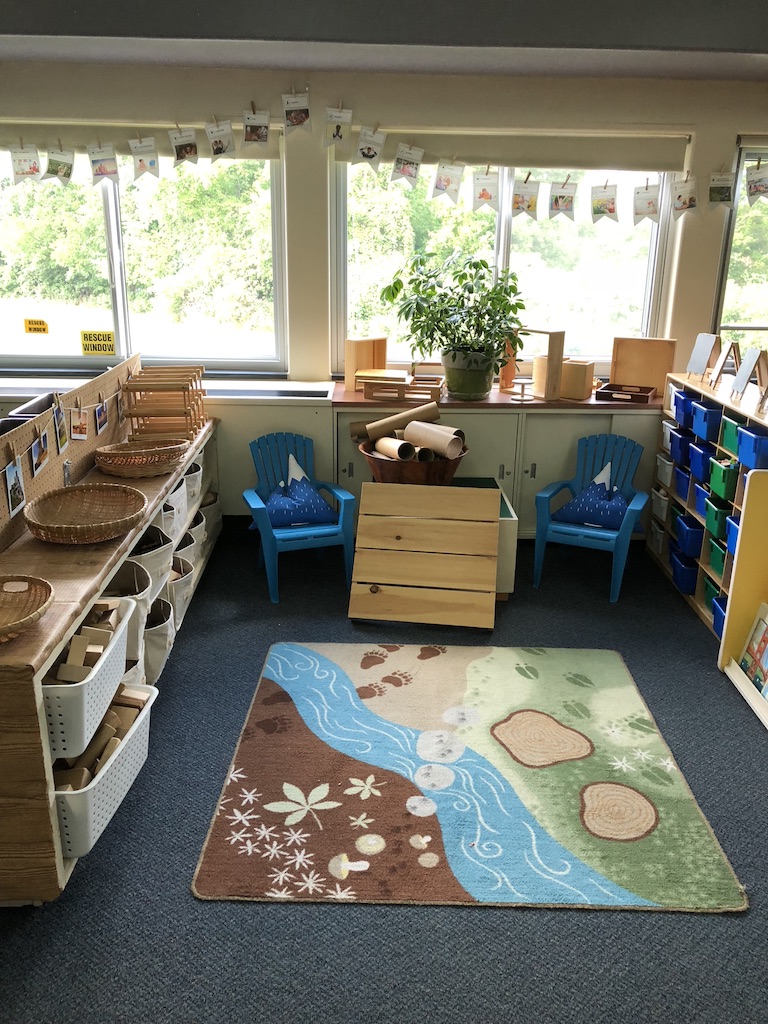
For this center, I’ve chosen an area with a large floor space (in other classrooms it has doubled as my meeting area) and stocked it with whatever blocks I had in my classroom. When I first began, it was just a set of wooden unit blocks, but over the years I’ve added more sets from garage sales and even my own kids’ closets.
The wooden block set serves as our base set for all center explorations for the entire year. I add props, such as plastic animals, signs, pictures, tiles and various loose parts, as they relate to units or inquiries that we are doing.

I offer 3 types of Block Center Challenges throughout the year, with varying levels of complexity. For example, “What can you build with sticks?,” is a material challenge. “Can you build a tree house?,” is a structural challenge, and, “Can you build a forest habitat?” is a habitat challenge.
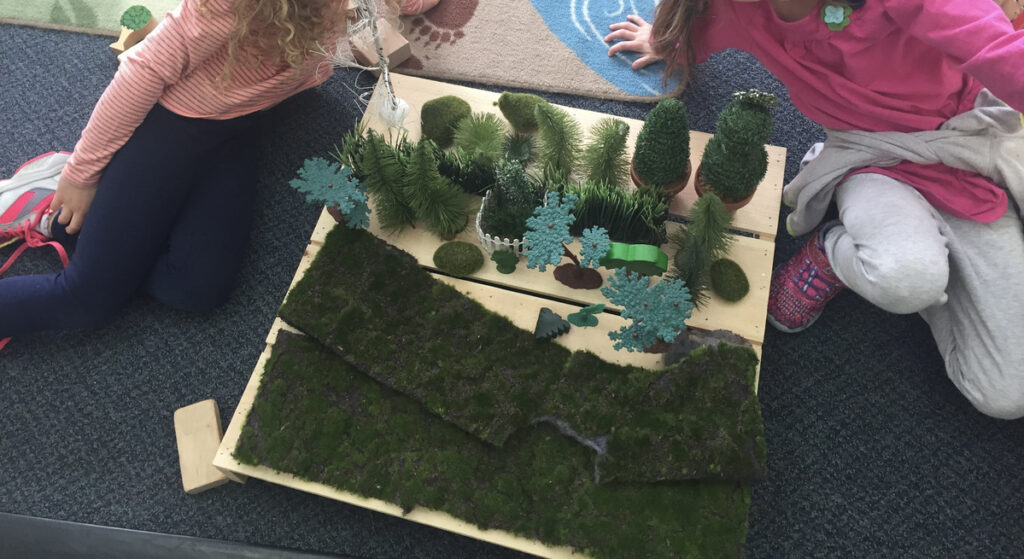
Each of these challenges give children the opportunity to think critically and be creative.
Read More: 5 Must-Have Materials for Your Kindergarten Block Center
Art Center
I created a spot for art by designating shelving and cupboards to store all of our art materials and paper. I placed two table-top easels on a counter, but also use a nearby table because some art experiences require a flat surface.
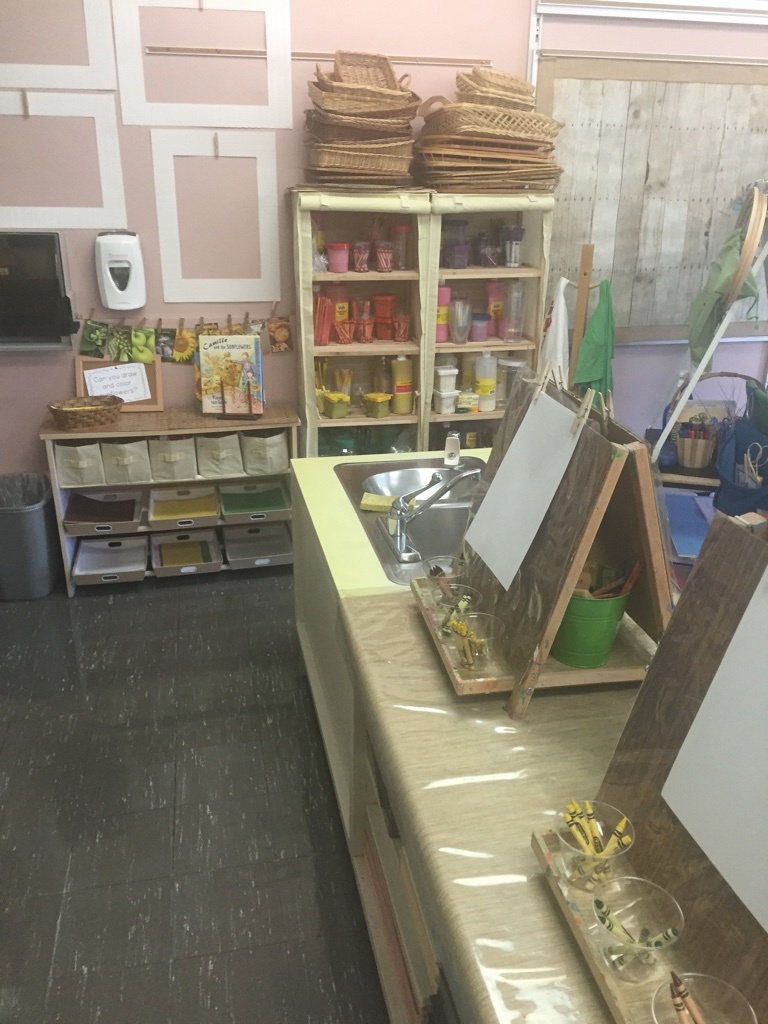
I choose invitations that give children the opportunity to explore different art mediums (i.e. paint, chalk, torn paper, watercolors, markers, crayons, and more) as well as apply their content area learning by creating art that reflects a season, an animal habitat, or type of weather that we are learning about.
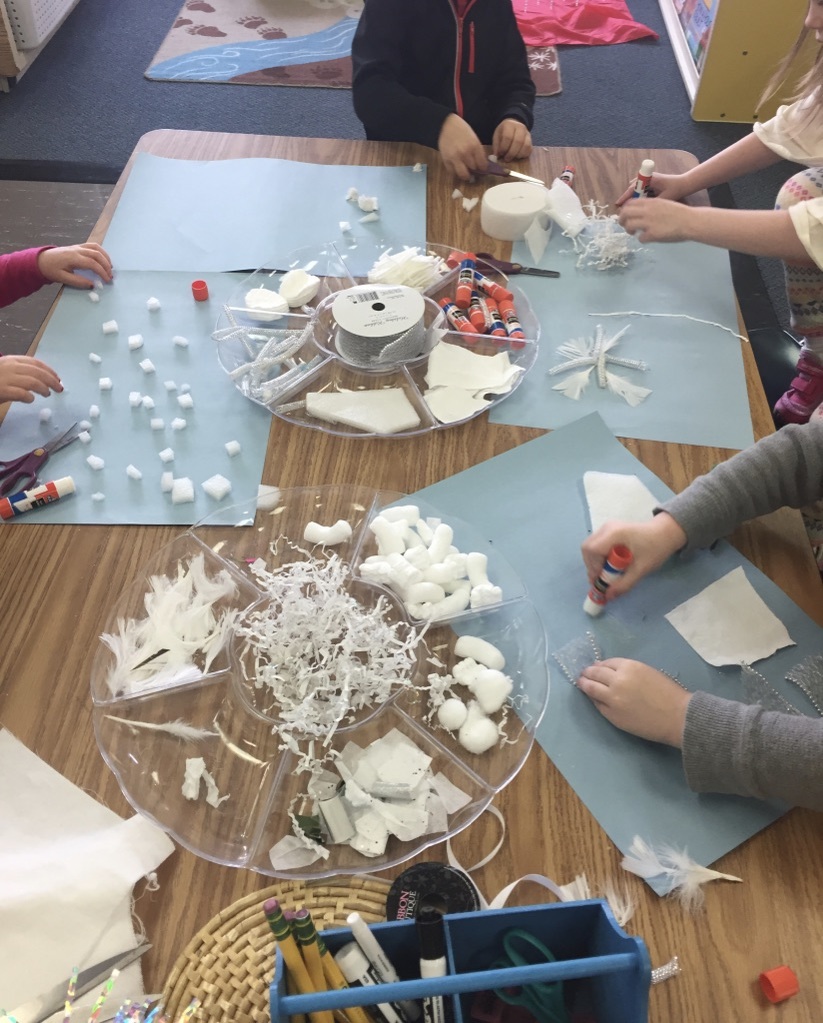
Interesting seasonal objects, that relate to units or inquiries, are also brought in for children to sketch, paint and color.

We also experiment with the science of art by mixing colors and doing bubble painting.
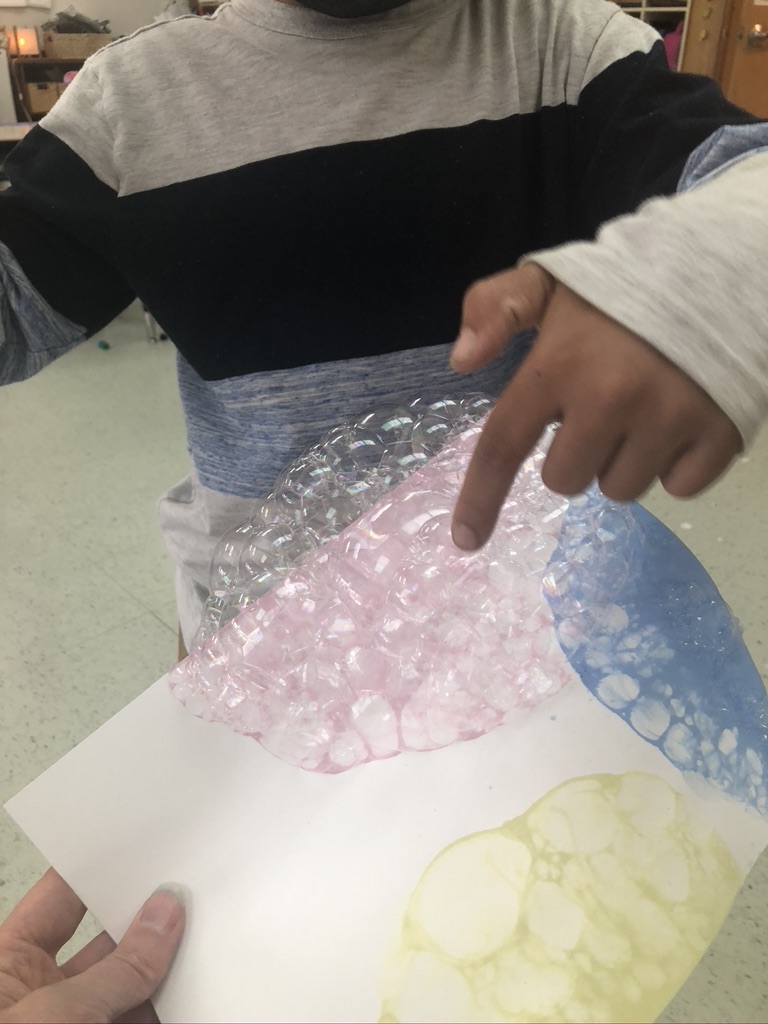
Read More: Exploring STEAM Through Your Art Center
Makerspace
This center is in close proximity to the art center as some of the materials will be shared. Here I include recyclable materials such as cardboard, egg cartons, milk caps, or paper tubes, as well as those that allow children to “attach” or “fasten” items together such as paperclips, binder clips, string, tape, or a stapler.
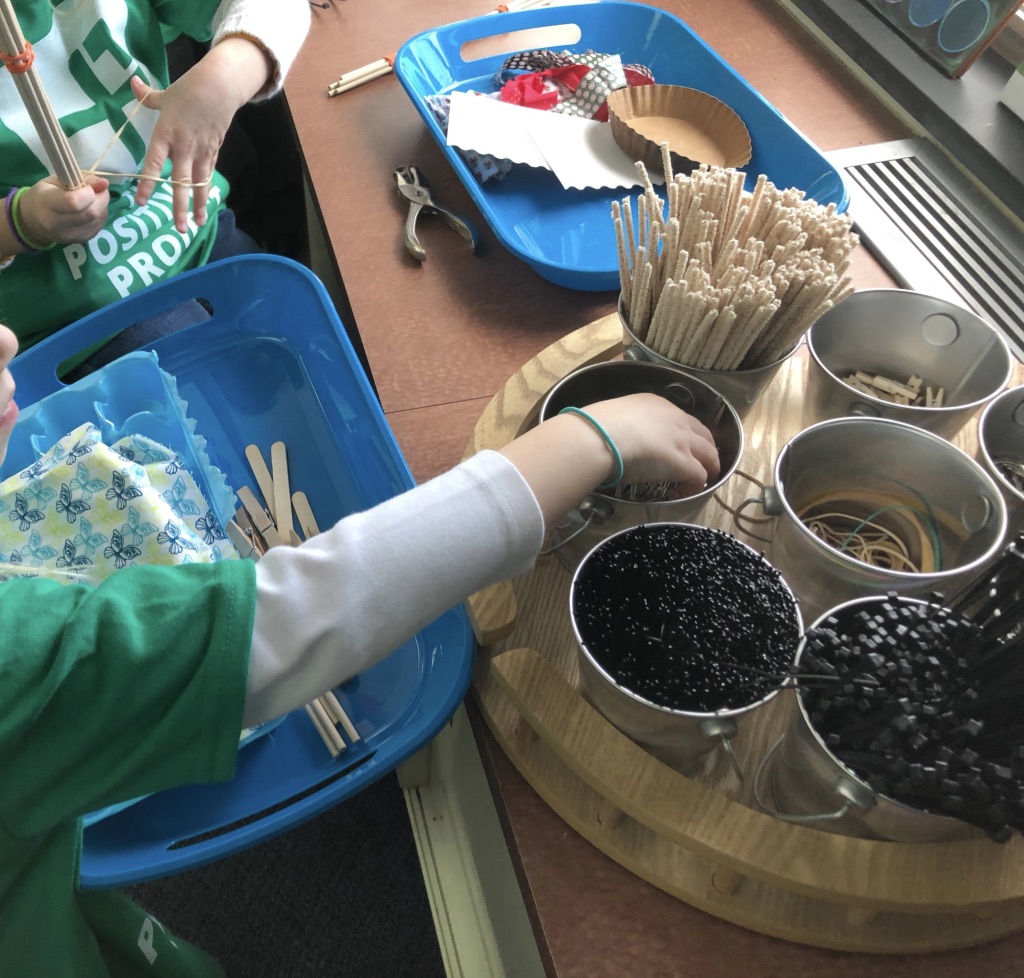
I offer 3 types of Makerspace Challenges for kids throughout the year. For example, “What can you build with straws and pipe cleaners?,(building challenge) “Can you upcycle a paper tube?” (upcycle challenge) or “Can you design and build a maze?” (design challenge) Each type offers a different level of complexity and involvement.

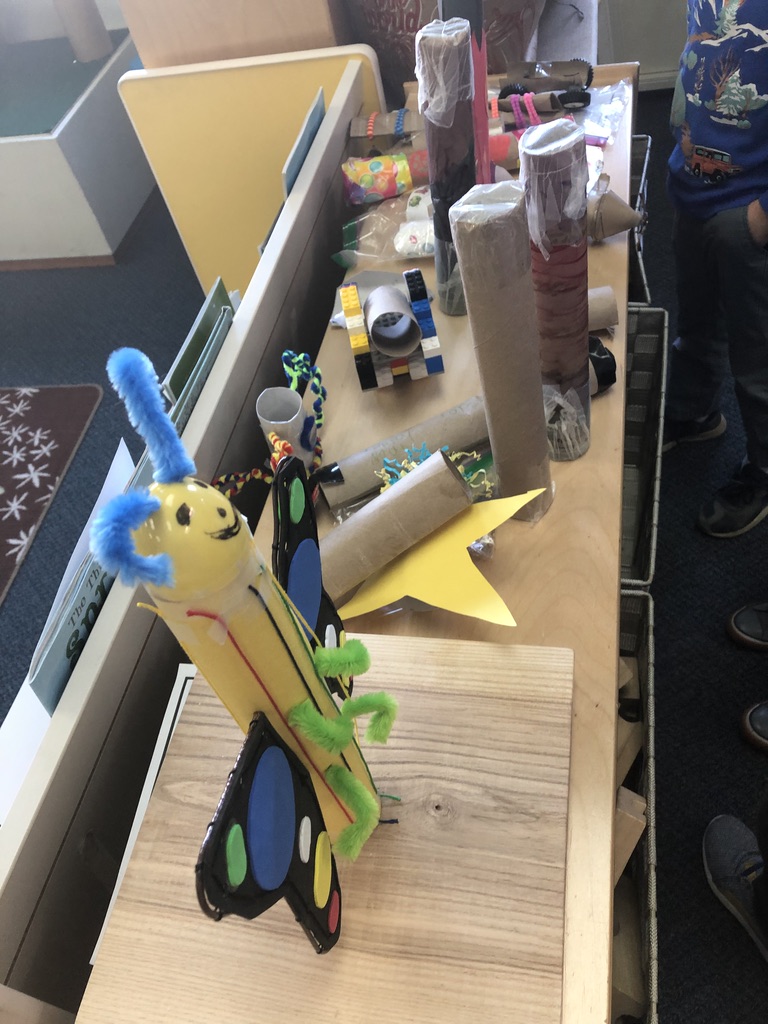
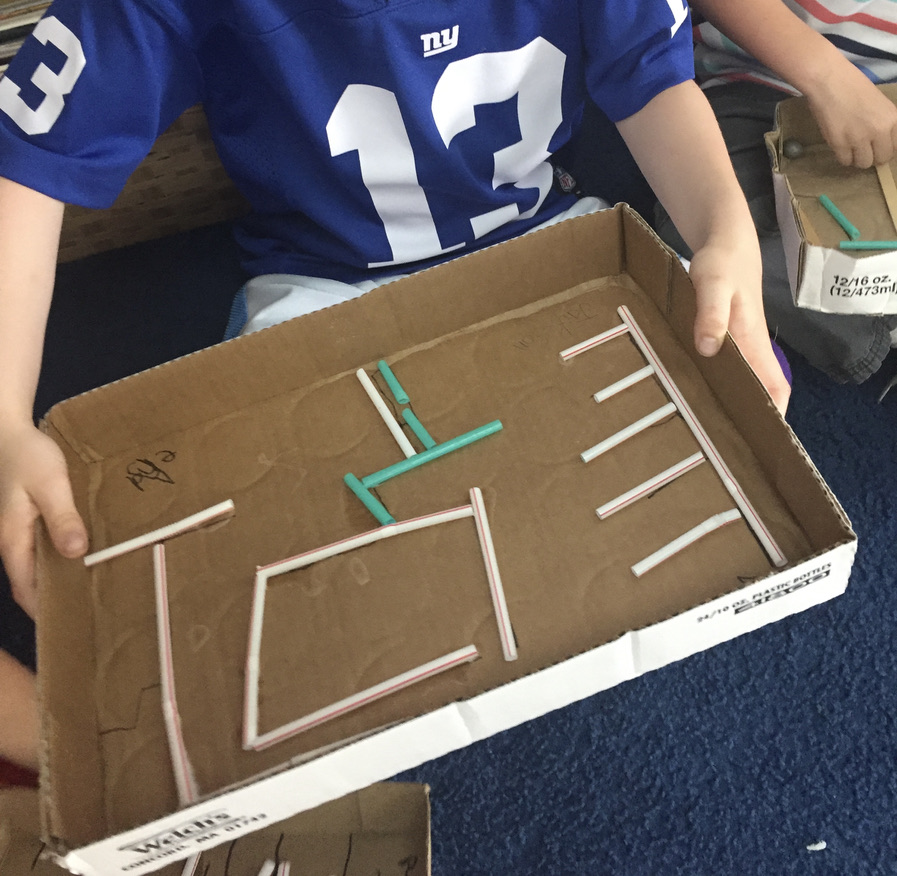
When working at the makerspace, each child begins with a tray that they can first use to gather materials and then maintain as a workspace.
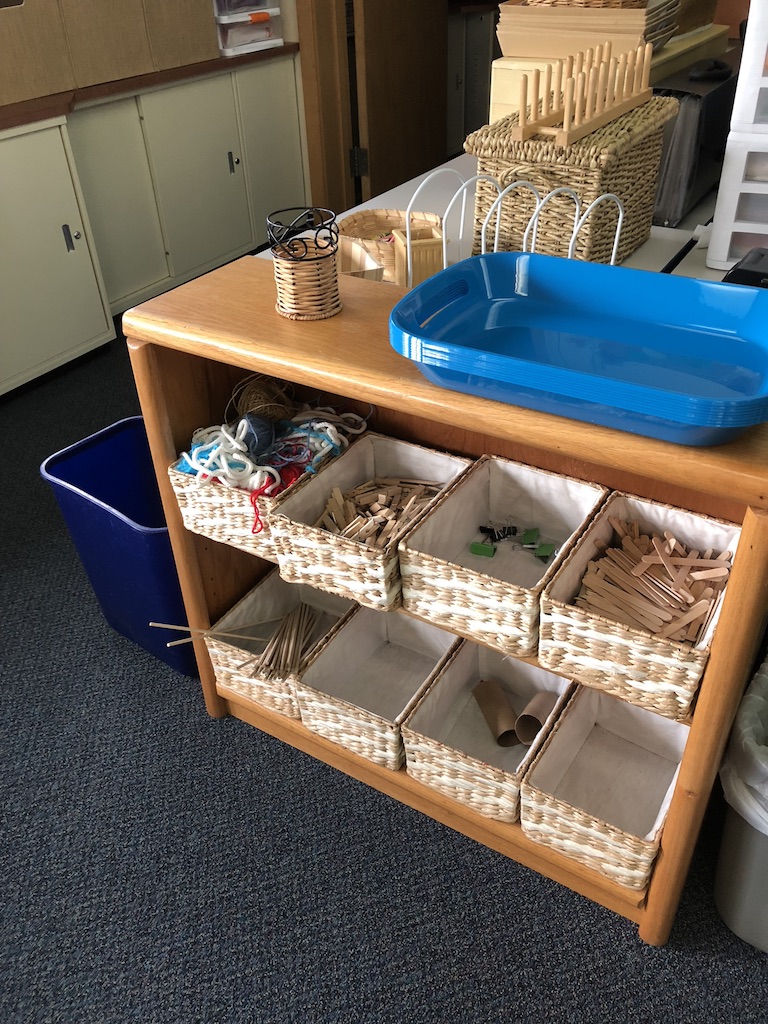
These trays also come in handy for “works in progress,” to keep everything in one place until they return to work on it the next day.
Read More: 3 Types of Makerspace Challenges to Use Across the Year
Math Center
I often use the math center to extend what we are doing during whole and small group instruction. Items such as math manipulatives, tools (i.e. scales, number bonds, ten frames, etc.) number rhymes, and math books are placed there once we’ve used them together.
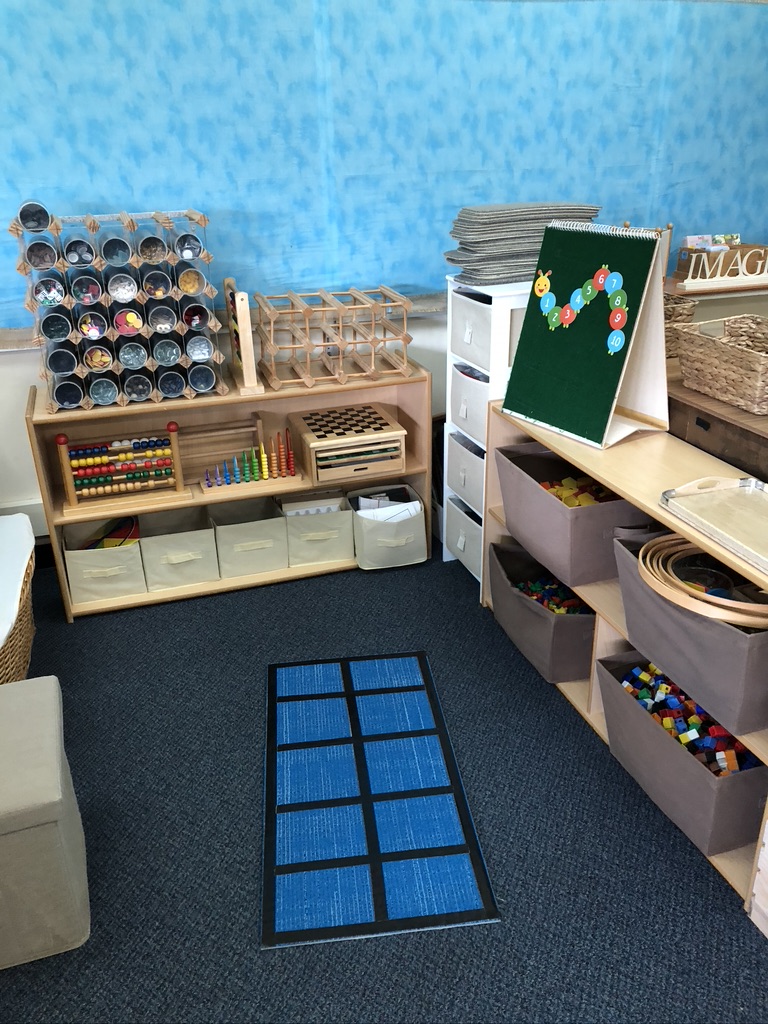
Number Sense Activities, such as counting jars, number building mats, number staircases, and addition/subtraction story mats are all good choices for children to use year-round to provide continued practice with different areas of number sense.
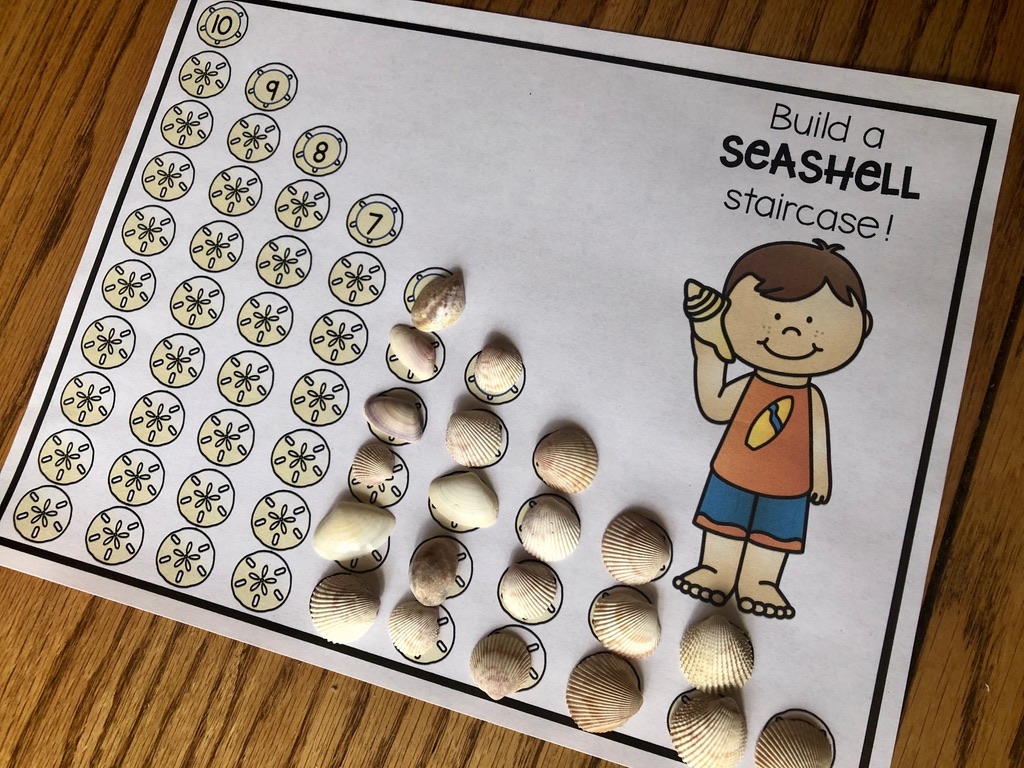
Sorting and counting trays are placed in this center for children to organize different sets of materials.
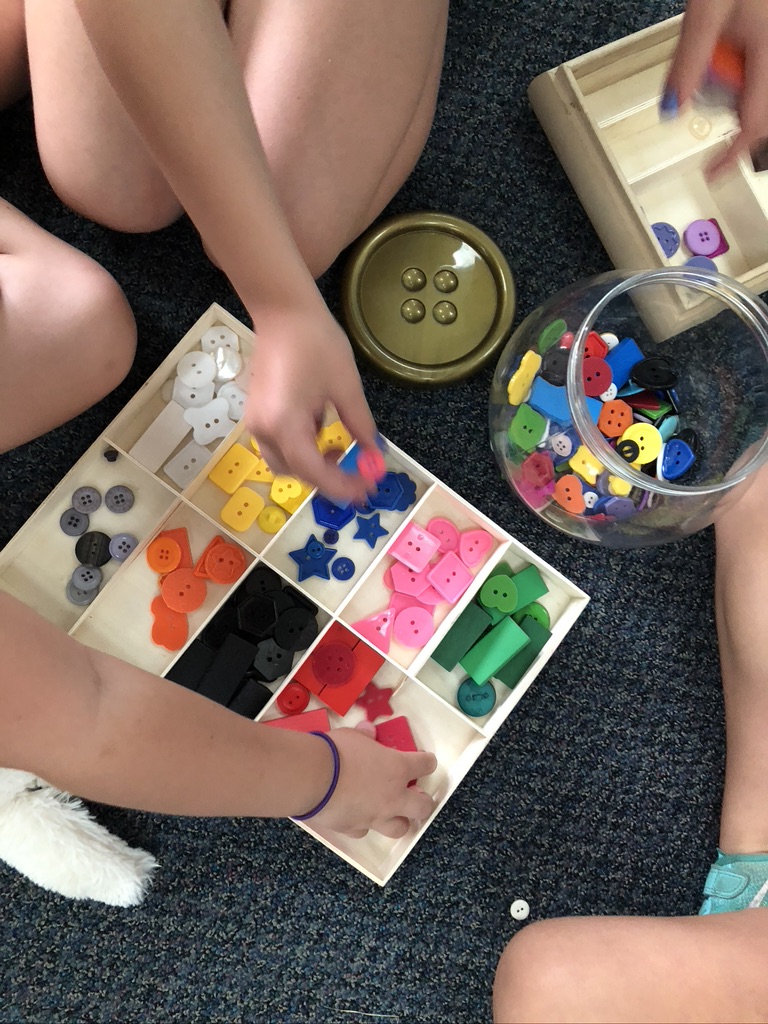
And rotating sets of seasonal objects are used for sorting, counting, measuring, and more.
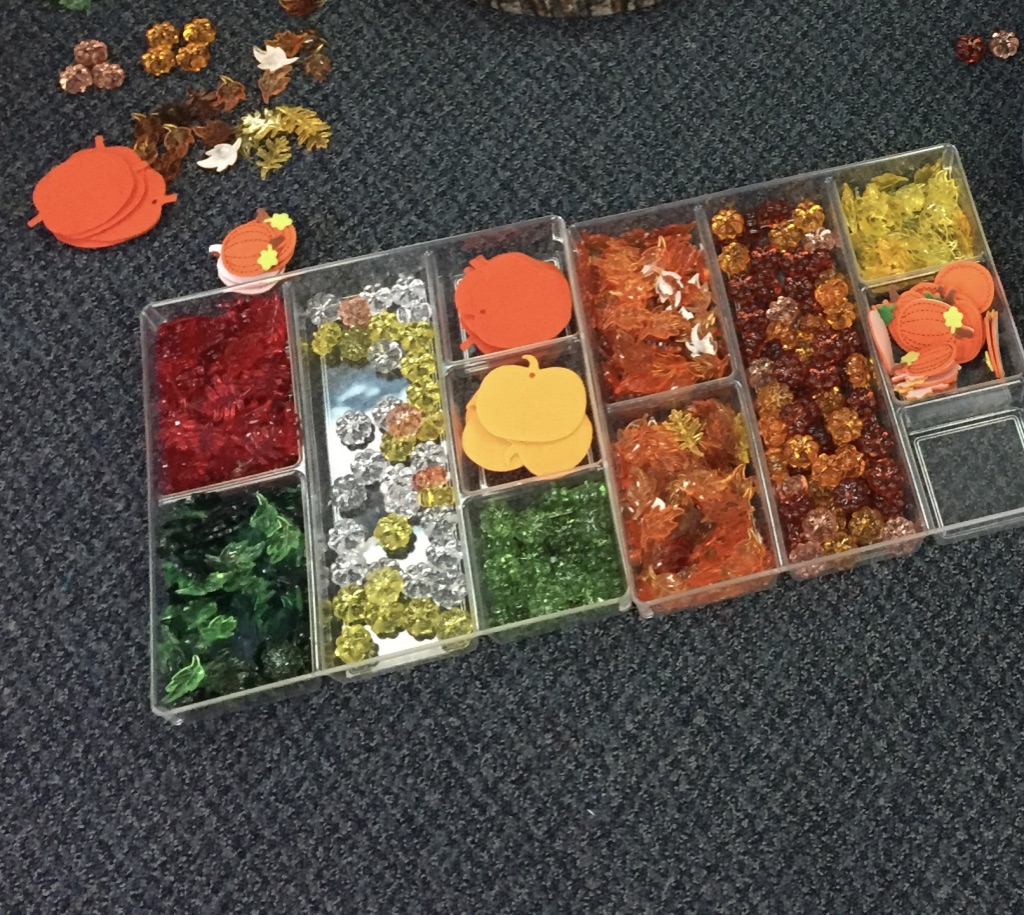
Read More: Number Sense Activities for Your Kindergarten Math Center
Story Center
As an alternative to a dramatic play center, I set up a storytelling center where children bring the stories we are reading together to life through acting out and retelling.

I create story baskets that hold props for some of the stories we read and make them available once we have read the story repeatedly during shared reading. This routine supports children in being able to retell the story on their own, using the props as a scaffold for sequencing and language.

Children are encouraged to use their best “story voices,” to talk like the characters in the stories they are retelling.
I also include open-ended materials such as wooden peg people, craft sticks, and other loose parts so children can make up their own stories.
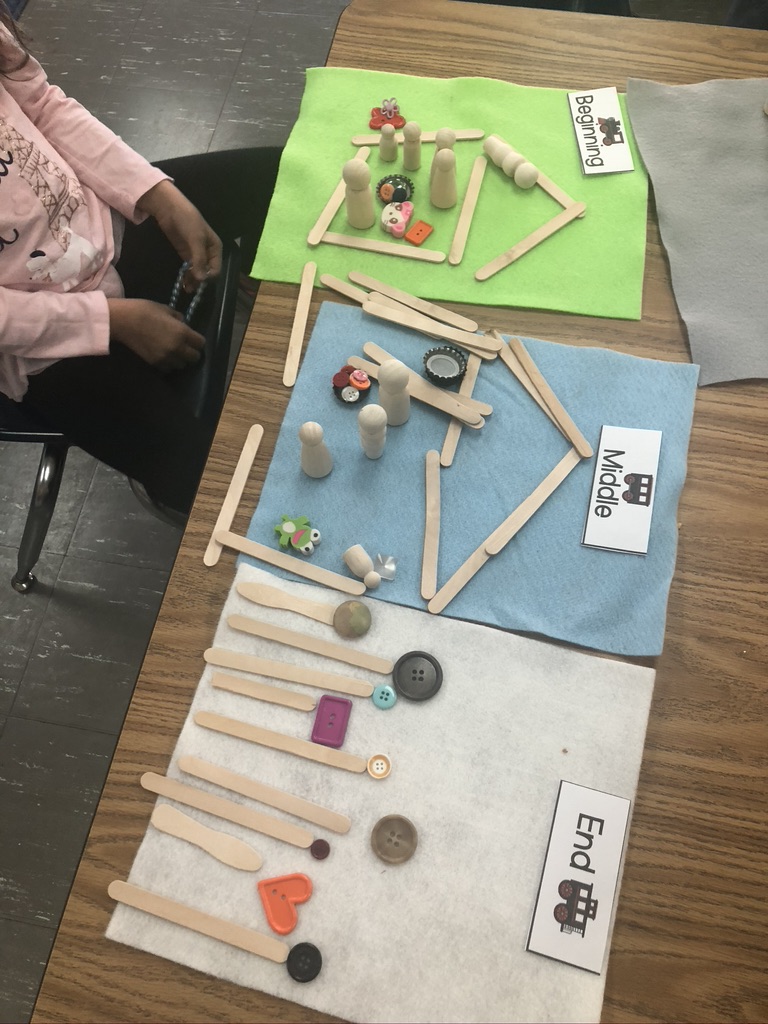
Story Maker Mats provide graphic organizers that help children use story structure, such as beginning/middle/end or problem/solution, to retell or create stories.
Read More: Retelling Stories with Story Maker Mats
Science Center
The science center is used to spark curiosity and encourage experimentation through observation and play.
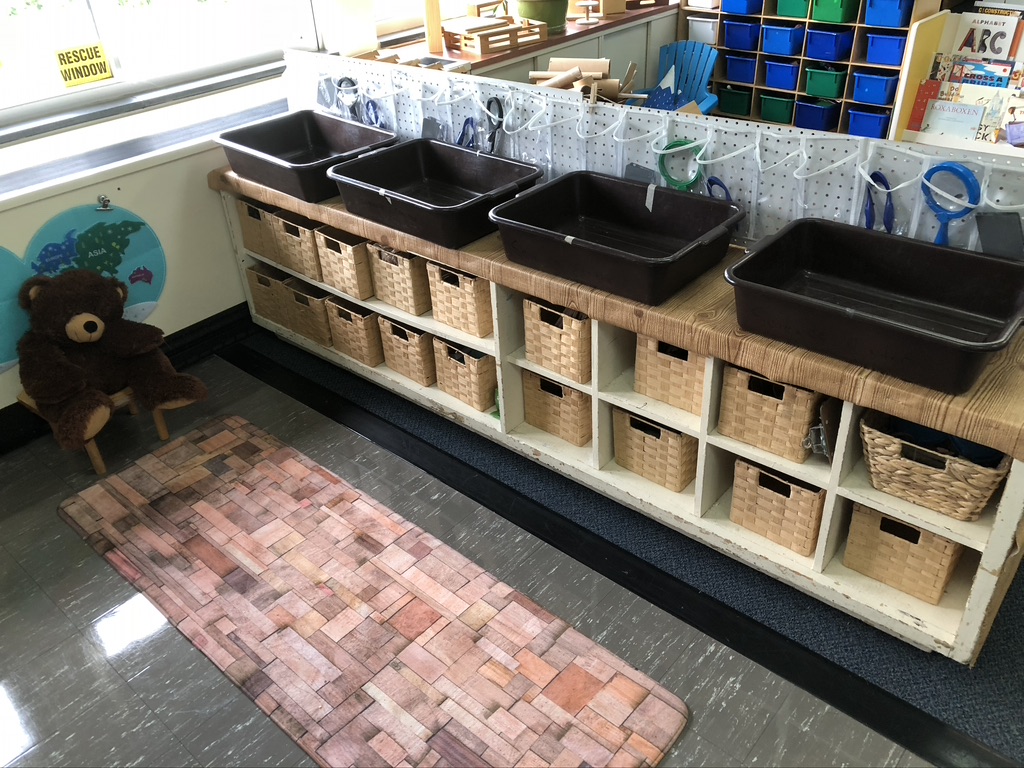
It is home to several tubs and trays that children use to explore Cool Collections, such as rocks, shells, or seeds, or as a Take-Apart Tub, where children can dissect natural objects such as a sunflower head or pine cones.
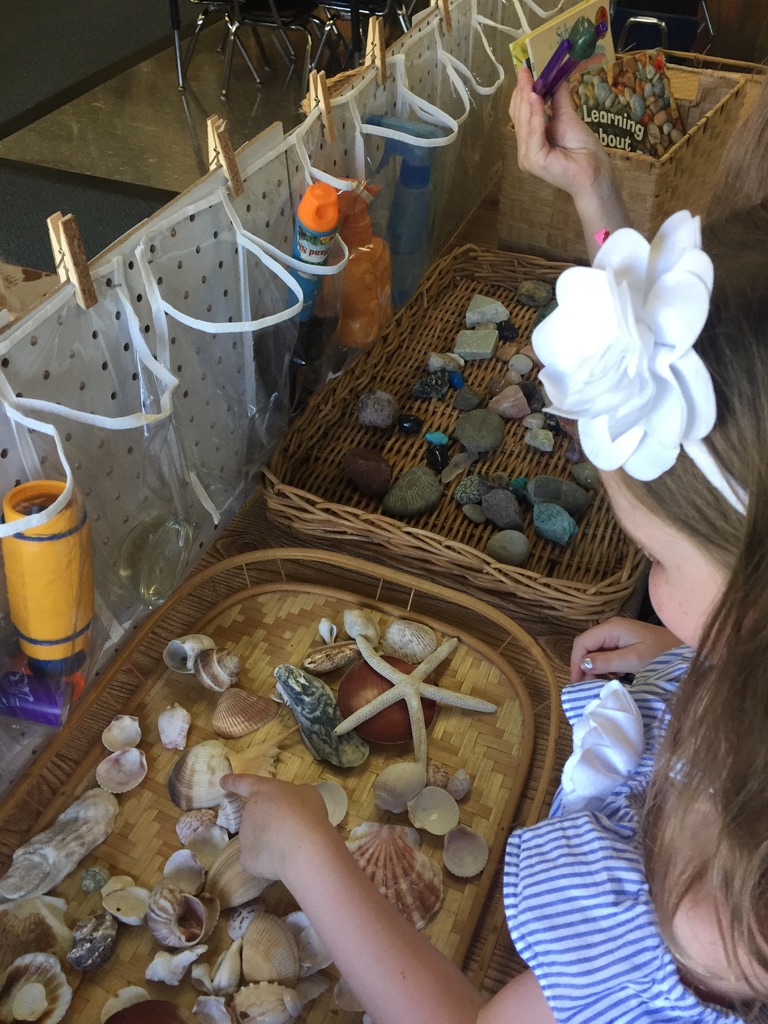
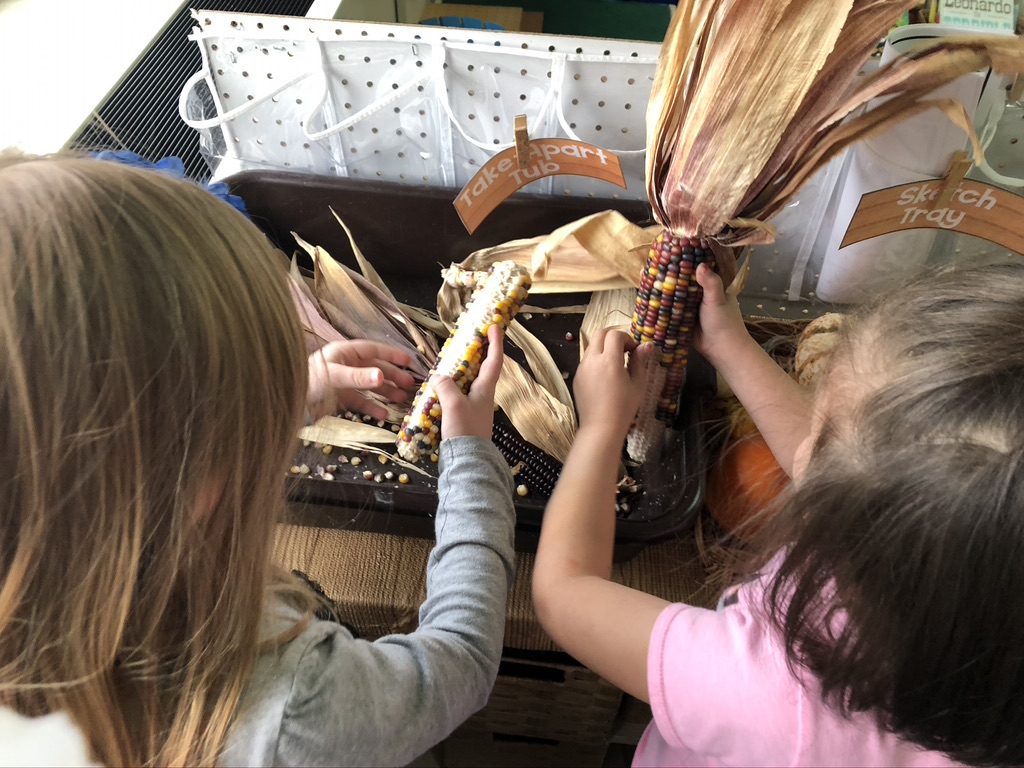
I include a Creature Feature station where children can explore and record animal features using sets of plastic animal figures as well as animal reference books.

It’s also a space to keep ongoing experiments that we are doing as a whole class.

Read More: Science Center Activities That Your Kiddos Will Love
Writing Center
The writing center offers a quieter option for children who might need it.
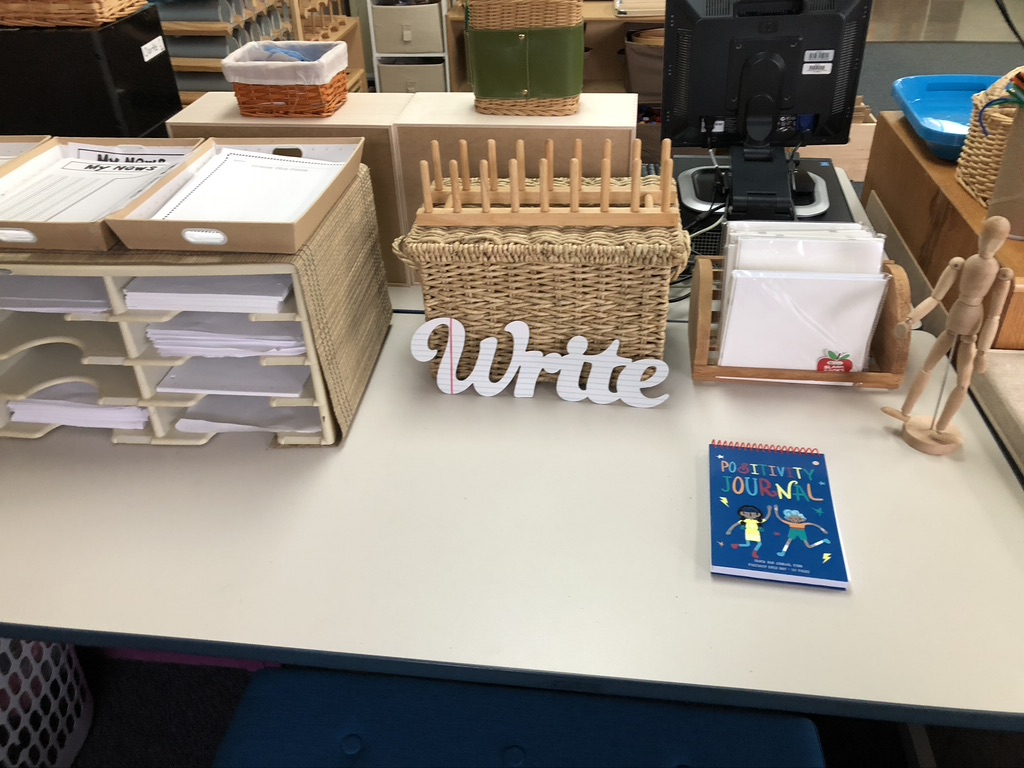
Children who choose to work here can do a directed drawing and labeling, or write their News, a Thank-You Card or Letter, a note to their teacher, or tell a “true and about you” story in a Whole Class Journal.
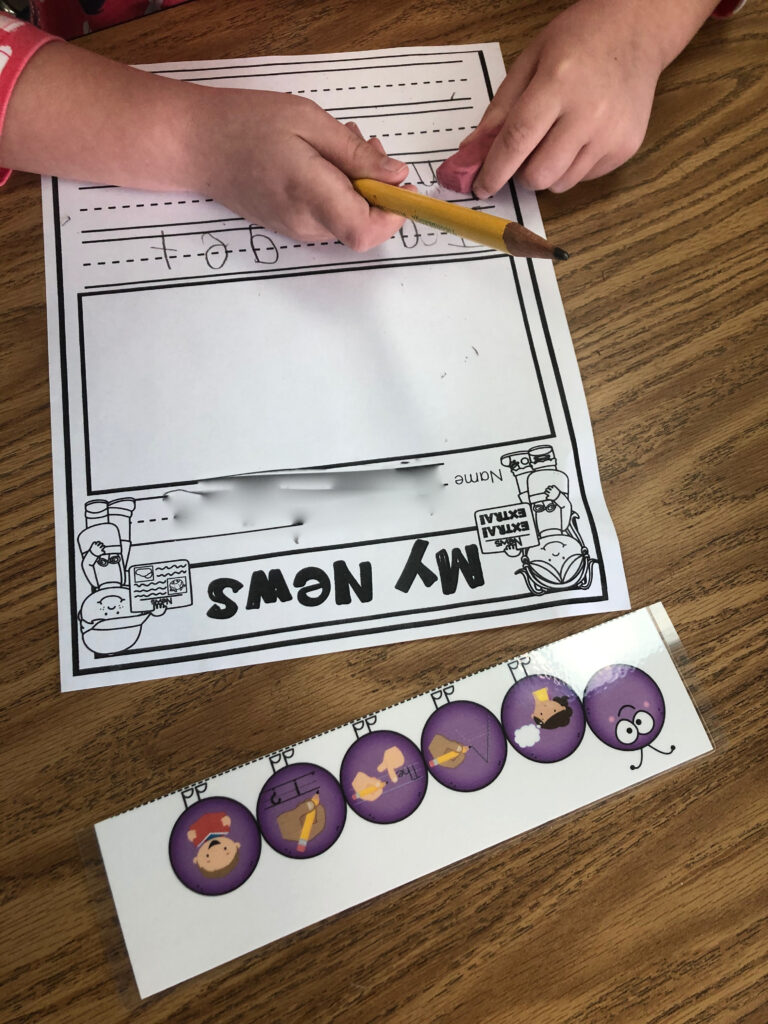
Materials stored here can also be used in other centers and children will often bring writing paper into the block or science center to draw or write about the work they are doing there.
Read More: Writing Center Activities for Beginning Writers
What Makes These Play-Based Centers?
Each of the above centers are open-ended and children have the freedom to choose where they work, which materials they want to use, and how they want to use them. Because of this, play naturally happens as children explore, experiment and discover using the variety of materials they find in the centers.
Einstein once said, “Play is the highest form of research.”
If you watch closely to what children are doing in play-based centers, you will see them demonstrating important future-ready skills, such as critical thinking, communication, collaboration, and creativity.
They think they are just playing.
But we know better!
More Resources for Play-Based, Choice Time Centers
Why I Use Choice Time Centers in My Kindergarten Classroom
3 Ways to Add Materials to Your Kindergarten Play Centers
Launching Choice Time Centers at the Beginning of the Year
Discovery Center Classroom Setup Guide Bundle
Discovery Center Activities Bundle
And download this FREE set of Discovery Center Month-By-Month Calendars, that will help you plan a variety of activities for 7 developmental centers. Each calendar is color-coded by center, includes 25 ideas for each month of the school year, and has clickable links for each activity.
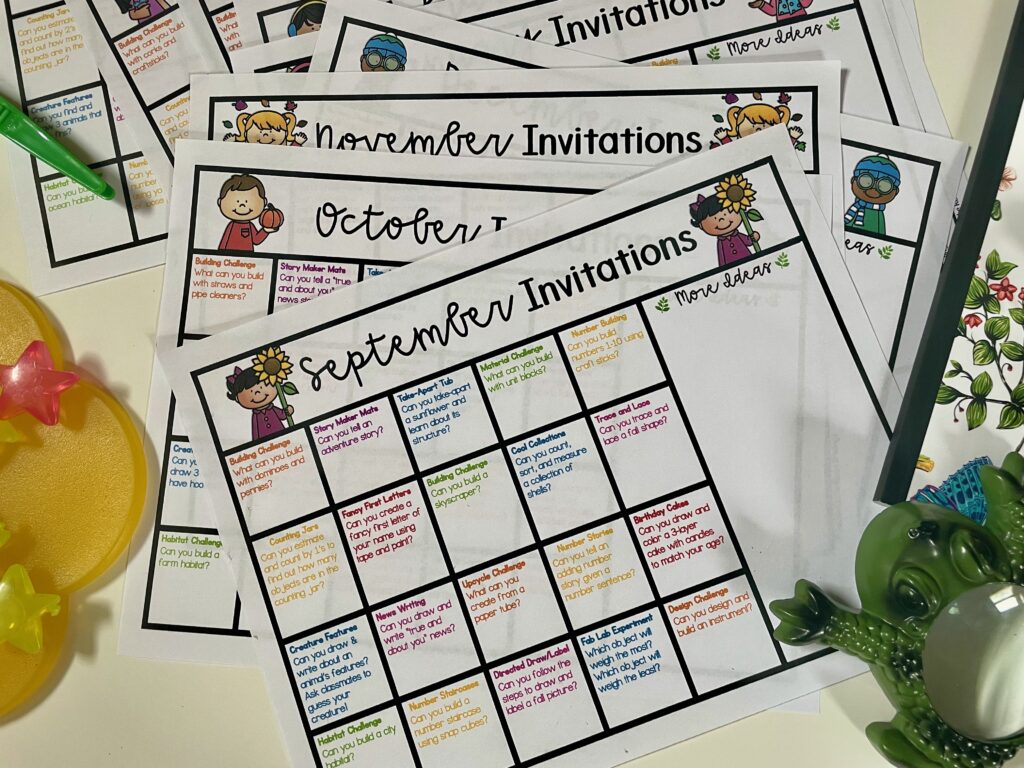
And don’t forget to check out the Roots & Wings Resource Library, for lots more kindergarten goodness.



 5 Earth Day Projects for Kindergarten
5 Earth Day Projects for Kindergarten A Kindergarten Inquiry: Investigating Winter
A Kindergarten Inquiry: Investigating Winter Why I Use Choice Time Centers in my Kindergarten Classroom
Why I Use Choice Time Centers in my Kindergarten Classroom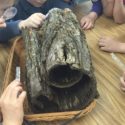 Are Trees Alive?: A Mini Inquiry
Are Trees Alive?: A Mini Inquiry
Please teach me to teach like this! I’m planning on leaving public school to start a learning center/hybrid school and want a play-based classroom like this. Please email. I would love to chat with you.